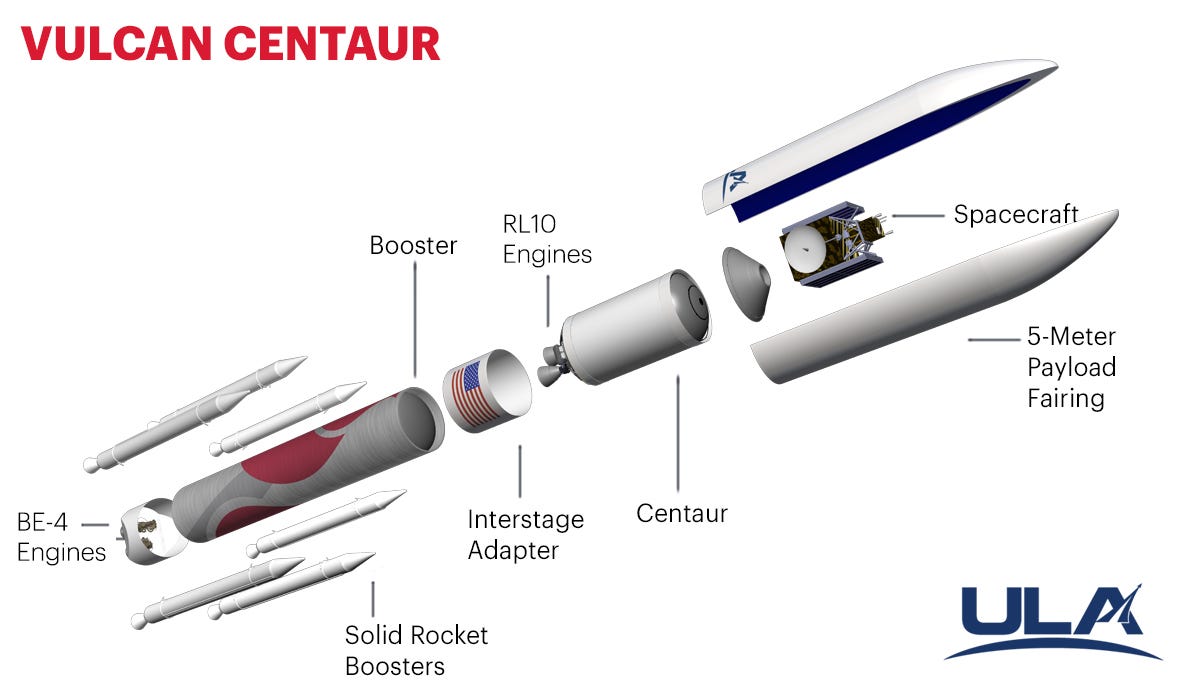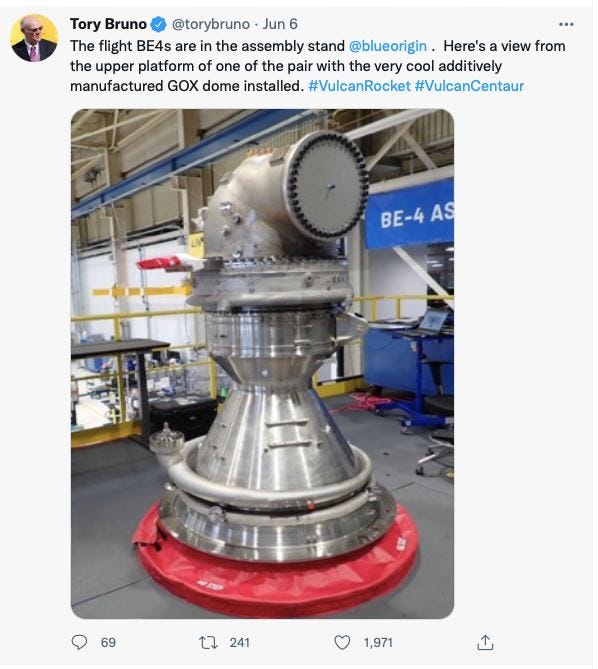
Thanks to those of you who took part in the survey. Some great ideas for the Premium version of Full Throttle that is coming your way soon. Full Throttle posts twice a week. Follow me on Twitter, Instagram, and Linkedin.
NASA just sent a small satellite, known as a CubeSat, to check out an orbit around the moon. It is an orbit NASA wants to use for returning astronauts to the lunar surface. Tuesday’s launch of that small satellite cost us taxpayers just under $10 million.
“Space travel is just too darn expensive. And we know why it’s too expensive. It’s because we throw rockets away,” Amazon and Blue Origin founder Jeff Bezos declared five years ago. Reusability is the cornerstone of his company and has propelled Elon Musk’s SpaceX into the position of the leading launch provider for low earth orbit.

SpaceX's Falcon-9 booster on the left and Blue Origin's New Shepard booster on the right returning to land after launch. (Credit: SpaceX/Blue Origin)
Both Blue Origin and SpaceX have built rockets that return to earth and land upright after boosting payloads toward space. One of their competitors has a different idea for reusability.
REUSABILITY REDESIGN
Rather than return and reuse the entire first-stage booster, United Launch Alliance (ULA) is working on a system to bring back just the most expensive part of the rocket, the engines. ULA is the joint venture of Boeing and Lockheed Martin that launches expendable Atlas and Delta rockets for the Defense Department and NASA. ULA is desperately trying to replace its Atlas rockets that use Russian-made engines. Congress wants those engines eliminated.

ULA's new rocket Vulcan which could fly later this year. (Credit: ULA)
ULA calls its system Smart Reuse and claims it will save more money than flying the full booster back that requires more weight and fuel.
BUYING A COMPETITOR'S ENGINE
ULA made a deal with Bezos to use his Blue Origin BE-4 engines on its new rocket, called Vulcan. Those precious engines are what ULA someday hopes to reuse. The problem is Blue Origin was late delivering those engines and Vulcan hasn’t flown yet. Once it does, the first flights will be expendable. The booster and those BE-4 engines won’t be saved.

But as the rocket is developed, ULA says it will employ this unique reusability plan. Once the booster has done its job and separated from the rest of the spacecraft, the engine section will detach from the first stage.
INFLATABLE HEAT SHIELD
ULA plans to use some technology being developed by NASA to get those two engines back through the atmosphere. It’s called an inflatable decelerator, which is set to be tested later this year by NASA in a mission called LOFTID (ready for this? Low Earth Orbit Flight Test of an Inflatable Decelerator). It is fascinating technology.

Testing of the inflatable heat shield for NASA's upcoming LOFTID mission. (Credit: NASA/Greg Swanson)
An inflatable cone will protect the engines from the heat of reentry and provide some drag to slow it down. Once in the atmosphere, a parafoil is deployed. ULA says a parafoil can carry up to 40,000 pounds. As the engines fly on that parafoil a helicopter swoops in, grabs the engines, and returns them to land avoiding the saltwater of a splashdown.
QUITE THE CONCEPT
Sounds crazy, right? Even one of ULA’s engineers thought so at first. “When I first heard about it, it seemed like a very strange, even laughable, concept, “ said ULA’s Jeremy Braunagel. “It’s actually a genius way to do it,” he added.
A portion of a ULA video explaining its Smart Reuse system for its Vulcan engines. (Credit: ULA)
ULA is probably still a couple years from recovering engines from space, but we have seen success with helicopter capture. Rocketlab grabbed one of its rockets earlier this year. The pilots let it go because something didn’t feel right, but it appears helicopter recovery is viable.
SMART REUSE?
When will ULA actually capture and reuse engines? The ULA CEO Tory Bruno told CNBC in 2018 that Vulcan would fly in 2020 and reusability would follow two or three years later. The first BE-4 engines have recently been delivered and are being mated to the rocket. Bruno says Vulcan will fly later this year.
Tory Bruno talks to CNBC in 2018 about ULA's Vulcan and reusability. (Credit: CNBC)
For Bruno's plan to succeed the LOFTID mission later this year will need to be prove the decelerator will work and protect the engines. Then, ULA will attempt to join the reusability trend.
Final notes: Bruno has been busy, not only building this rocket, but rebuilding ULA. My Discovery Channel colleague Christian Davenport wrote about that effort for the Washington Post.
If you listen to the Tory Bruno clip above, he talks about the second stage ULA is developing. Here is an earlier newsletter that discusses what he is thinking about Centaur.
(Cover image credit: NASA)




